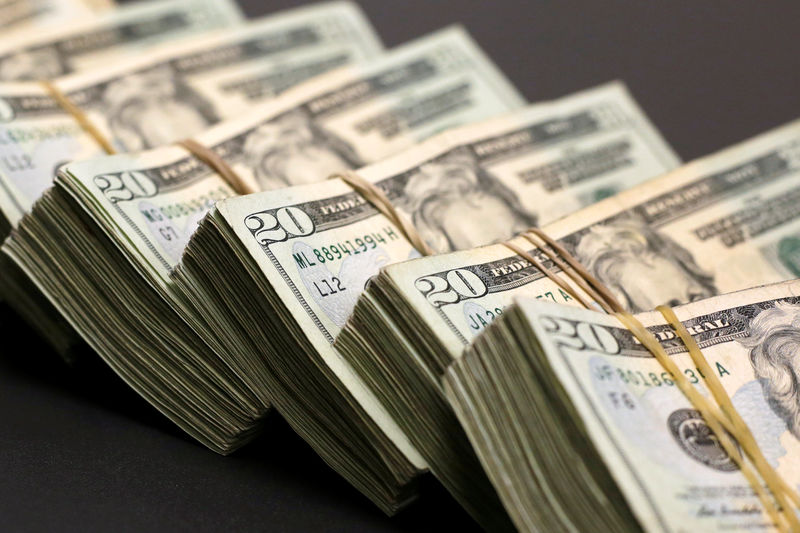Dollar goes below R$5.30 with continued correction; Market digests US data, IPCA via Reuters
3 min read
 © Reuters. Dollar bills 11/14/2014 REUTERS/Gary Cameron
© Reuters. Dollar bills 11/14/2014 REUTERS/Gary CameronBy Luana Maria Benedito
SAO PAULO (Reuters) – The currency, which some traders attributed to a technical correction and a perfect influx of resources in Brazil, reversed early gains on Friday and started to fall sharply on Friday. In the market, investors digested the US employment report and the June IPCA reading. At 11:27 (GMT), the spot dollar was down 0.85% at 5.2990 reais, a session low, rising briefly on the back of U.S. employment data. At the high of the day, the currency gained 0.48% at 5.3701 reais. In B3 (BVMF:), at 11:27 (Brasilia time), the first-maturity contract was down 0.81% at 5.3320 reais. FB Capital’s director of operations Fernando Bergalo told Reuters that this morning’s drop in the dollar was a continuation of a downward correction earlier in the day, when the currency retreated 1.45% to 5.3443 reais. The dollar has risen on 18 of the past 23 full trading days, up nearly 12% over the period. After significant currency moves, a one-time correction in the opposite direction is normal as investors take profits. The drop in the U.S. currency may also reflect the influx of foreign money into Brazil given the attractiveness of the local stock market, which has “become cheap” after the recent decline, Bergalo said. “If a dollar is 5.30 ris (a) in 100 thousand points, it is called a flow regardless of context.” The international scene was mixed this morning as investors digested news that the US economy added 372,000 jobs outside the agriculture sector last month, according to Labor Department data, versus a Reuters survey estimate of job creation. The better-than-expected result in June brings the economy closer to recovering all the jobs lost during the pandemic. The unemployment rate remained at 3.6% for the fourth month in a row. Gustavo Cruz, strategist at RB Investimentos, said that reading, despite a recent resurgence of international recession fears, blocks the prospect of a worsening U.S. job market, which reinforces the Federal Reserve’s tendency to raise interest rates. Balance. On the one hand, this outlook could benefit the dollar and affect currency risk, as higher borrowing costs in the U.S. will attract funds to the U.S. fixed income market. On the other hand, the rebound in U.S. jobs is good news for investors who have expressed concern about the performance of the world’s largest economy, which could ease fears of a global recession and renew appetite for riskier assets such as emerging currencies. A real part. Abroad, stability hovered around a basket of stronger currencies, nearing two-decade highs. But the index was well below this morning’s peak immediately after the jobs report. In Brazil, investors digested the IPCA’s June reading, which rose 0.67% over the period, compared with a rate of 0.47% in May. Despite the acceleration, the result came in slightly lower than expected in a Reuters poll and was generally well received in domestic markets. RB’s Cruz said the inflation data reinforces the view that the central bank will end its monetary tightening cycle at its next meeting on August 2 and 3. Most markets are betting on a 0.50 percentage point increase in the Selic rate to 13.75%.
(Editing by Camila Moreira)

“Communicator. Award-winning creator. Certified twitter geek. Music ninja. General web evangelist.”




